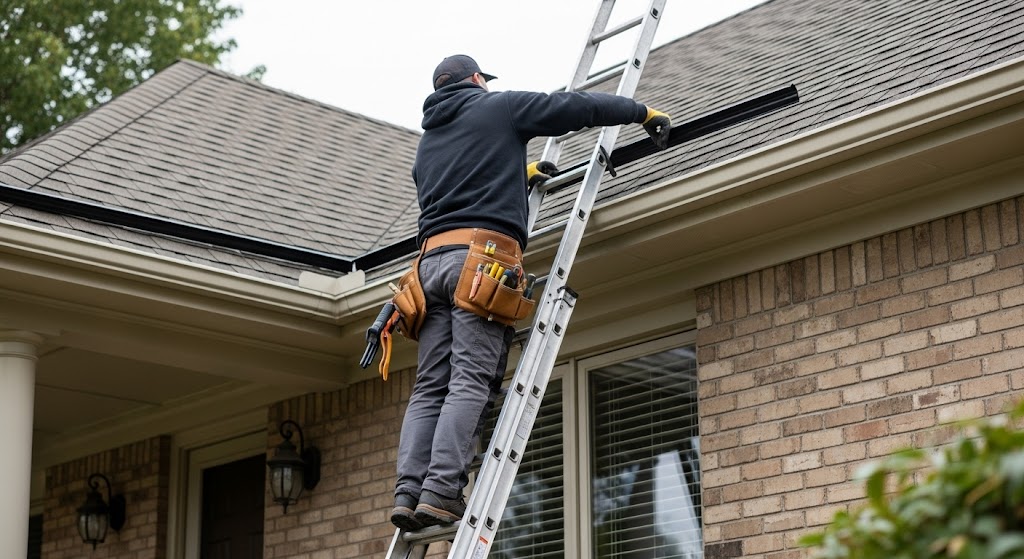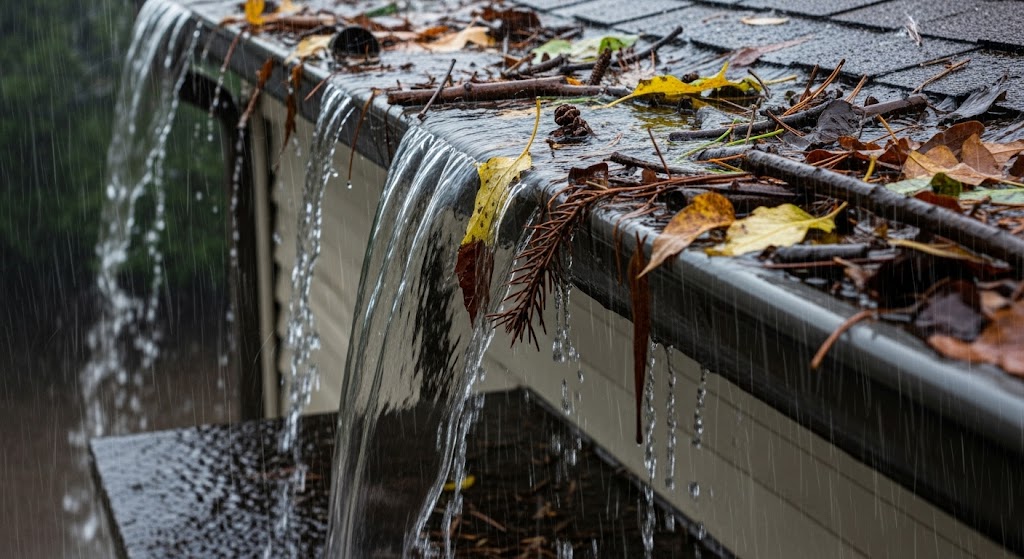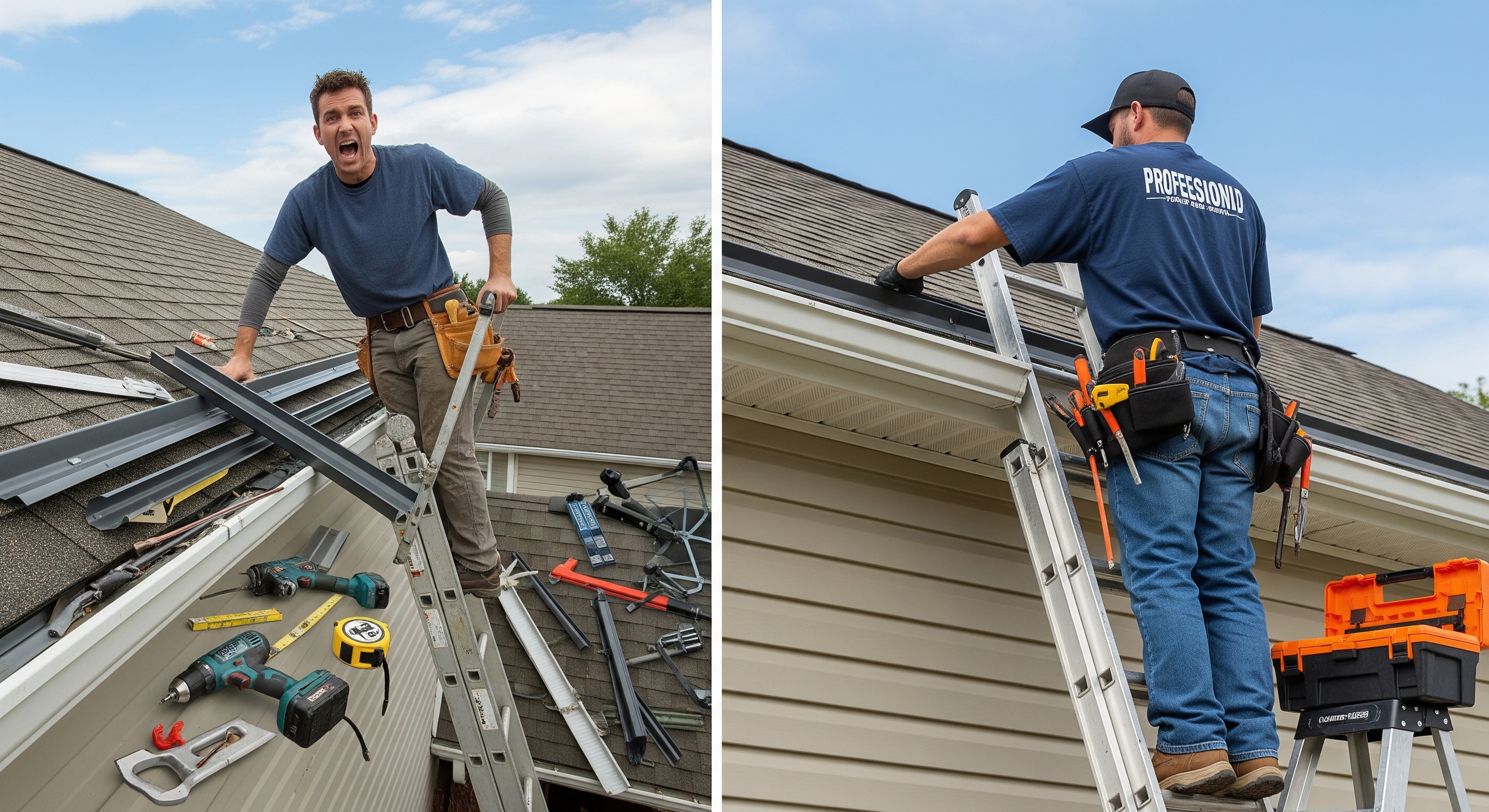
The 5 Main Types of Gutter Guards Pros, Cons & Best Use Cases

Gutter guards prevent leaves, twigs, pine needles, and debris from clogging rain gutters, safeguarding roofs, foundations, and siding. By installing the right guard, homeowners reduce maintenance, avoid water damage and curb erosion. Each type of gutter guard uses different materials and designs—mesh, micro-mesh, reverse curve, screen, foam, and brush to channel rainwater while keeping debris out. Understanding their features, trade-offs, and optimal applications helps in choosing the ideal solution for any climate or property condition.
Why Gutter Guards Matter
Clogged gutters lead to overflow, water intrusion in basements, landscaping erosion, and roof leaks. During heavy storms, unprotected gutters can become overwhelmed, sending water pooling against foundations. By filtering debris at the roofline, gutter guards maintain water flow, reduce rust and corrosion, and extend the lifespan of gutters and downspouts. They also deter pests and nesting birds, further protecting roof underlayment and attic spaces from damage.
Routine gutter cleaning can cost hundreds annually or require risky ladder work. Installing guards limits cleaning frequency to surface clearing only, saving time and money. Guards backed by robust warranties offer a permanent upgrade, ensuring consistent performance against environmental stressors. Proper selection based on local foliage, rainfall patterns, and roof pitch maximizes these benefits and preserves a home’s structural integrity.
Comparing the 5 Main Gutter Guard Types
Brush Gutter Guards
Brush guards resemble large bottle brushes laid inside gutters. Their stiff bristles block leaves and large debris while allowing rainwater to trickle through the fibers. Installation is simple bristle cores flex to fit any K-style or half-round gutter. Homeowners with limited DIY experience find brush guards convenient.
Brush guards excel at intercepting heavy leaf fall and small branches. The drawback is that bristles trap smaller debris like pine needles, requiring periodic removal. Over time bristles can flatten or deteriorate under UV exposure, shortening lifespan. Despite this, they remain an affordable, no-tools option for properties near deciduous trees.
For a deeper look at durable mesh and brush designs, explore our best gutter protection solutions.
Foam Gutter Guards
Foam gutter guards consist of triangular or rounded foam inserts that fit snugly inside the gutter channel. Made from open-cell polyether foam, they allow water to pass through pores while catching leaves and twig fragments on top. Their lightweight design lets homeowners install them quickly, with no special tools required.
On the downside, foam guards can become waterlogged, compressing over time and reducing flow capacity. They also attract fine debris—soil, roof grit, pollen—leading to blockages within the foam itself. In freezing climates the inserts can crack, necessitating seasonal removal. For modest budgets and low-tree environments, however, foam guards remain a DIY-friendly choice.
Discover how gutter guards enhance longevity in our Benefits of gutter protection overview.
Screen Gutter Guards
Screen guards use perforated sheets or wire mesh, typically made from powder-coated steel, aluminum or heavy-duty plastic. The screened surface catches large debris on top, while water flows through holes into the gutter. Many models clip or screw onto the front lip, and premium versions can slide under shingles for extra stability.
Screen guards offer mid-range cost and durability, standing up well to sun and rain. Their larger perforations, however, allow fine particles—acorns, shingle grit—to enter gutters. Metal screens can rust over decades if coatings wear thin. Still, for moderate climates and mixed foliage—large leaves with minimal pine needles—screen guards strike a good balance of performance and price.
Join countless satisfied homeowners at home defender usa for a professional screen guard install.
Micro-Mesh Gutter Guards
Micro-mesh guards feature ultra-fine stainless steel or aluminum mesh sheets backed by a rigid frame. Mile-wide in their filtration capability, they block everything from leaves to pollen and roof shingle debris. Rainwater passes freely through micron-sized holes, making micro-mesh the most effective barrier against clogging.
Installation often requires professional expertise to lift shingles and secure the guard beneath the roof edge. Upfront costs and labor are higher, but micro-mesh systems come with warranties of 15 to 25 years and resist rust. For homes surrounded by pine trees or in dusty environments, micro-mesh provides near-maintenance-free protection.
Learn more about our team and vision on the About us page.
Reverse Curve Gutter Guards
Reverse curve guards—also called surface tension or helmet guards—use a curved deflector to guide rainwater around a lip and into the gutter trough. Debris drops over the lip onto the ground or roof below. This design prevents most leaves and branches from ever touching the gutter interior.
Reverse curve systems are highly visible from ground level and demand precise professional installation, including shingle lifting. They handle heavy rain well, but small debris can wash into gutters, and the extended lip may void some shingle warranties. Best suited for areas with large-leaf trees and infrequent fine debris, reverse curve guards offer robust, low-maintenance performance.
Reach out any time through our Contact us form for a free quote or expert guidance.
How to Choose the Right Gutter Guard
Selecting the ideal gutter guard requires weighing local tree types, rainfall intensity, roof pitch, and budget. Brush and foam guards suit low-cost DIY or light debris scenarios. Screen guards fit general conditions with moderate upkeep. Micro-mesh excels in high-debris or pine-needle zones, while reverse curve is optimal against large-leaf foliage when visibility isn’t a concern.
Additional factors include gutter style (K-style vs. half-round), desired maintenance frequency, and warranty duration. Homeowners with historical foundation or water damage should invest in premium micro-mesh or reverse curve systems. Those seeking quick fixes often find brush or foam guards adequate until larger upgrades become feasible.
By matching debris profiles and maintenance willingness to guard features, homeowners achieve long-term gutter reliability.
FAQs
How often do gutter guards need cleaning?
Most gutter guards reduce cleaning frequency from four times a year to once annually. Micro-mesh and reverse curve systems may only require occasional inspections, while brush and foam inserts often need semiannual surface clearing.
Can gutter guards prevent ice dams in winter?
Gutter guards alone don’t stop ice dams. They can reduce leaf blockages that trap melting water but won’t heat gutters. Heated cables or proper attic insulation and ventilation remain the best ice-dam solutions.
Will gutter guards void my shingle warranty?
Shingle warranties vary. Flush-mount systems under shingles can void some warranties if they lift the bottom course. Screen and reverse curve guards require careful installation; micro-mesh and reverse curve often need professional installation to preserve shingle integrity.
Are metal gutter guards better than plastic?
Metal guards (aluminum, stainless steel) resist UV degradation and offer longer lifespans—up to 25 years for micro-mesh. Plastic guards are cheaper and simpler to install but age faster and may brittle in cold temperatures.
What gutter guard type is best for heavy rainfall?
In high-rain regions, micro-mesh and reverse curve systems channel large water volumes efficiently. Screen guards with large perforations also handle heavy flows, while foam and brush models can bottleneck during torrential downpours.
Choosing the right guard ensures free-flowing gutters, secure foundations, and a watertight home. For expert installation and personalized recommendations, trust home defender usa to protect your property with the right gutter guard solution.















.jpg)










